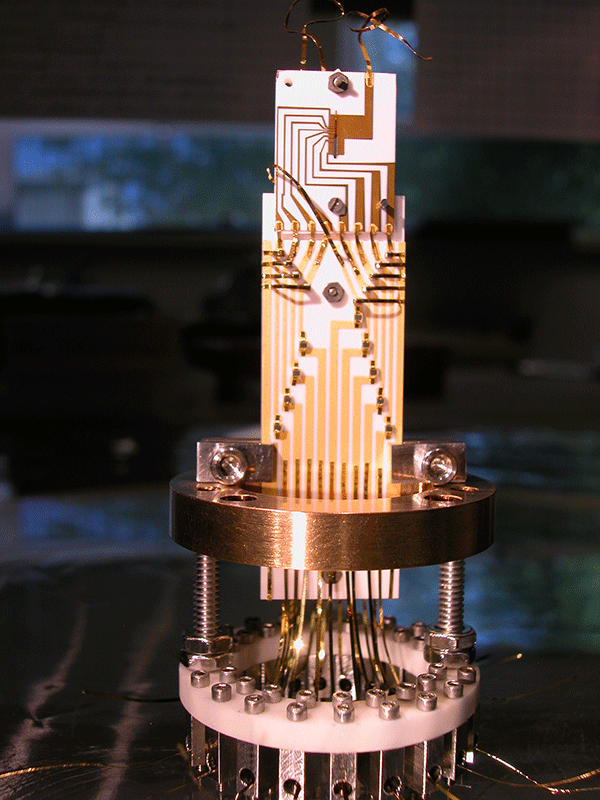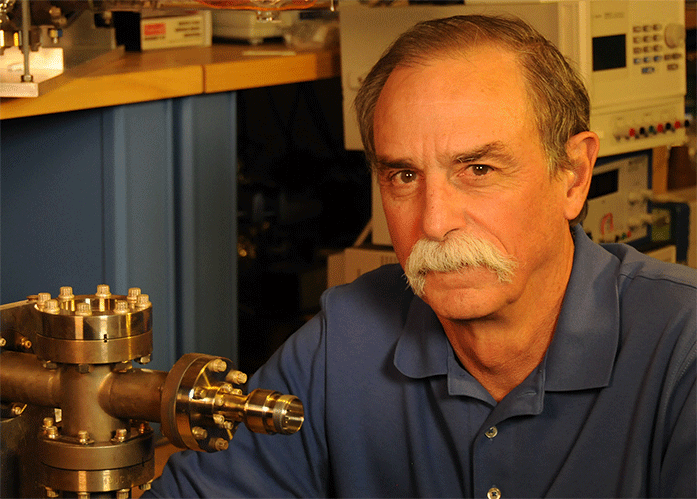18th Kaczmarczik Lecture
"Superposition, Entanglement, and Raising Schrödinger’s Cat"
David J. Wineland, PhD
Winner of the 2012 Nobel Prize in Physics
Monday, April 15, 2013
3:00 p.m.
Main Building Auditorium
3141 Chestnut Street
Philadelphia, PA 19104
 Already in 1935 Erwin Schrödinger, one of the inventors of quantum mechanics, knew that when extended to the realm of our everyday experience, the theory permits rather bizarre situations. To illustrate his point, he introduced his well-known cat that can simultaneously be both dead and alive. That is, its quantum state is said to be a superposition of both possibilities. Now, 70 years later, we can create situations that have the same attributes of this unfortunate cat, although so far only on the microscopic scale of a few atoms. As an example, first consider a marble placed in a bowl, rolling back and forth, but try to imagine what is classically impossible - a single marble that can be on the left side of the bowl and simultaneously on the right side! In the lab, we can make a miniature-version of just such a marble. We confine a single atom in a region where it can't escape, and then by applying laser forces we can realize a situation where it is in two places at once.
Already in 1935 Erwin Schrödinger, one of the inventors of quantum mechanics, knew that when extended to the realm of our everyday experience, the theory permits rather bizarre situations. To illustrate his point, he introduced his well-known cat that can simultaneously be both dead and alive. That is, its quantum state is said to be a superposition of both possibilities. Now, 70 years later, we can create situations that have the same attributes of this unfortunate cat, although so far only on the microscopic scale of a few atoms. As an example, first consider a marble placed in a bowl, rolling back and forth, but try to imagine what is classically impossible - a single marble that can be on the left side of the bowl and simultaneously on the right side! In the lab, we can make a miniature-version of just such a marble. We confine a single atom in a region where it can't escape, and then by applying laser forces we can realize a situation where it is in two places at once.
Two energy levels in an atom, labeled "0" and "1" can be used to store information just like the bits in our laptops. However, in analogy with the atomic marble in a bowl, we can arrange the quantum bit or "qubit" to be both "0" and "1" at the same time, thereby storing both states of the bit simultaneously. This property potentially leads to a memory and processing capacity that increases exponentially with the number of qubits. Therefore a normal computer memory of 300 bits could store about a line of text. However, a 300 qubit memory could store more information than a normal computer constructed of all the matter in the universe! This characteristic and a related property called entanglement would enable a quantum computer to efficiently solve certain problems that are intractable on normal computers. So far, we have only realized a quantum computer composed of a few bits. However, although extremely challenging, there doesn’t seem to be any fundamental reason that we can’t build a useful device in the future.
 David Wineland was born in 1944 in Wauwatosa, Wisconsin but was raised in Sacramento, California. He received a BA from University of California, Berkeley in 1965, and a PhD in physics from Harvard University in 1970. After a postdoctoral position at the University of Washington, he joined the National Bureau of Standards (now the National Institute of Standards and Technology) in Boulder, Colorado. He is a NIST Fellow and leader of an experimental group that explores the applications of laser-cooled trapped atomic ions, including the development of high-performance atomic clocks, research on quantum information processing, and tests of fundamental physical laws. Wineland's awards include the 2012 Nobel Prize in physics, Department of Commerce Gold Medal, the Society of Optical and Quantum Electronics' Einstein Medal for Laser Science, the APS's Arthur L. Schawlow Prize in Laser Science, the International Award on Quantum Communications, the Optical Society of America's Frederic Ives Award, and the National Medal of Science.
David Wineland was born in 1944 in Wauwatosa, Wisconsin but was raised in Sacramento, California. He received a BA from University of California, Berkeley in 1965, and a PhD in physics from Harvard University in 1970. After a postdoctoral position at the University of Washington, he joined the National Bureau of Standards (now the National Institute of Standards and Technology) in Boulder, Colorado. He is a NIST Fellow and leader of an experimental group that explores the applications of laser-cooled trapped atomic ions, including the development of high-performance atomic clocks, research on quantum information processing, and tests of fundamental physical laws. Wineland's awards include the 2012 Nobel Prize in physics, Department of Commerce Gold Medal, the Society of Optical and Quantum Electronics' Einstein Medal for Laser Science, the APS's Arthur L. Schawlow Prize in Laser Science, the International Award on Quantum Communications, the Optical Society of America's Frederic Ives Award, and the National Medal of Science.
High School Open House Program:
12:00-12:30 p.m. Main Building Auditorium
12:30-2:30 p.m. Department of Physics Open House
Brief presentations on Biophysics, Astrophysics, Computational Physics, Condensed Matter, Nonlinear Dynamics, Particle Physics, etc. An excellent opportunity for high school students to visit our laboratories and meet in person with our internationally recognized researchers.
2:30-3:00 p.m. Reception
About the Kaczmarczik Lecture
Paul Kaczmarczik began his career as a Professor of Physics at Drexel University in 1953. A key player in building the Physics and Atmospheric Science Department, he made important contributions to teaching at Drexel University during his many years of service. Well-liked by both his colleagues and his students, Professor Kaczmarczik became Professor Emeritus in 1989. The Kaczmarczik Lecture Series was established in 1995 in honor of Professor Kaczmarczik. It brings to Drexel outstanding scientists to present lectures on topics at the cutting edge of Physics research.